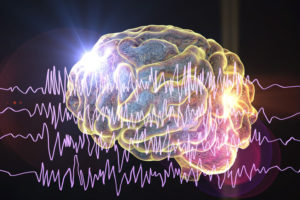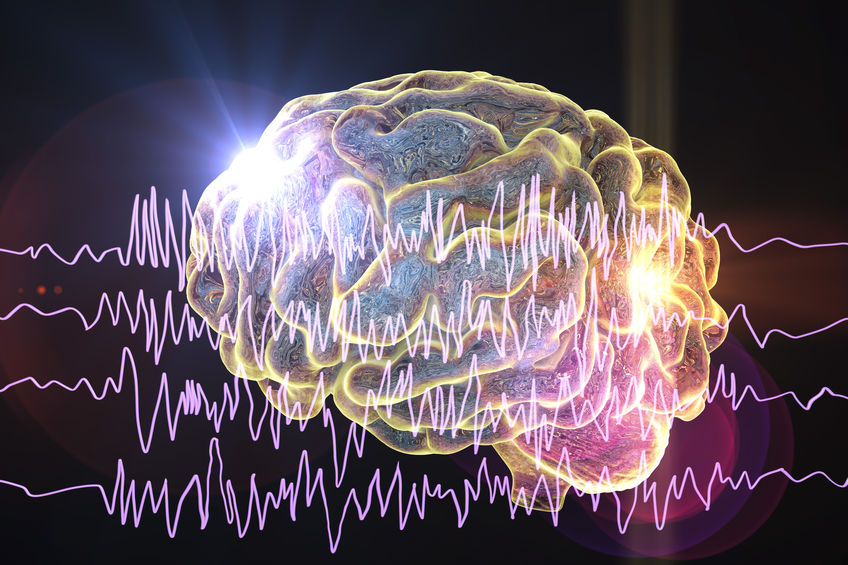
While Jesus, Peter, James and John were coming down from the Mount of Transfiguration, a man with a son who was demon possessed came to the remaining apostles and sought to have them cast a demon out of his son, but they were not able to do so. This was surprising, because earlier Jesus had given them authority to heal the sick and cast out demons—the same signs of the kingdom that he performed—and they were able cast out many demons and healed many who were sick (Mark 6:13). Their failure here was unexpected, which led to an argument with some of the scribes. It seems their failure to heal the boy cast doubt on the authority given to them by Jesus and by extension, Jesus’ ministry itself. As Jesus, Peter, James and John approached, they saw an argument occurring between the remaining apostles and the scribes. When the crowd sees that Jesus is returning, they rushed to meet him.
Jesus asked what they were arguing about, and the boy’s father said his son is epileptic; he has a spirit that makes him mute. Whenever it overtakes him, it throws him down, he foams at the mouth, grinds his teeth and becomes rigid. He said he brought his son for healing and finding that Jesus was not present, he asked the disciples to heal him, but they could not. Knowing what they were thinking, Jesus then addressed the crowd for their distorted or depraved faithlessness, asking rhetorically how long he will have to put up with them. Remember the disciples were part of the crowd too.
Jesus asked that the boy to be brought to him and when the boy approached Jesus, he convulsed, rolled on the ground and foamed at the mouth. Jesus then asked the father how long his son has been like this and was told he was like that from childhood. It happened frequently and would endanger the boy by throwing him down into the fire or even water. The father begged Jesus, if he could, to heal his son. Jesus repeated the father’s phrase, “if you can,” and said “All things are possible for one who believes.” The father then cried out that he did believe; but asked for help with his unbelief.
Jesus rebuked the spirit, commanding it to come out of the boy and never enter him again. The boy cried out, convulsed and then lay unmoving so that most of the crowd thought he was dead. But Jesus took the boy by the hand, and he arose. Jesus gave the boy back to his father. Matthew reported when the disciples privately asked Jesus why they could not cast out the demon, he said it was because of their little faith. However, Mark reported Jesus said that kind of demon could not be driven out by anything but prayer.
There are some interesting things to point out about this encounter, but first consider the following about the synoptic gospels from which the above account was taken. This incident is described in Matthew (17:14-20), Mark (9:14-29) and Luke (9:37-43). Mark has the most detailed account, while Matthew’s and Luke’s are shorter. The apostolic association of these gospels is Matthew himself was an apostle (and the only eyewitness to the event), while Mark was John Mark (Acts 12:12, 25; 15:37), an associate of Peter’s. Luke, of course, was Paul’s companion during his missionary journeys as well as the author of Acts. Mark is generally recognized as being the first gospel to be written. Further elaboration (and challenges) of these claims can be found by reading a New Testament Introduction like that by Donald Guthrie.
Mark (9:17) has the father saying his son has “a spirit [pneuma] that makes him mute.” Luke also said a spirit (pneuma) seizes the boy. But Matthew, the only one of the three who was an eye witness, said the boy is moonstruck (seleniazomai; lunatic in the King James translation). He has seizures; he is epileptic. The only other time seleniazomai is used in the New Testament is in Matthew 4:24, where it distinguishes those who have seizures (epileptics) from those who are demon possessed. Matthew further said the disciples could not heal (therapeuo) the boy; and when the demon came out, the boy was healed (therapeuo). Luke also said the boy was healed (iaomai), but used a different, less common Greek word.
The behaviors of the boy are consistent with what we would call a grand mal seizure. But the context of all three gospels indicates being moonstruck, being a lunatic, was thought to be a type of demon or spirit possession. This is true even in Matthew, where verse 17:18 says that Jesus rebuked the demon. In New Testament times it wasn’t known that epilepsy was a neurological disorder of abnormal brain activity causing seizures and other unusual behaviors, so they explained it within a context that fit their worldview—demon possession. In his commentary on Matthew, Leon Morris noted the emphasis was not on possession, rather it was on the simple fact the boy was “healed instantly,” with no mention of the demon coming out of the boy. The immediacy of the healing demonstrated Jesus’ mastery over both demons and disease.
The oldest description of epilepsy is on a Babylonia tablet in the British Museum, dating back to at least 2000 BC. It accurately described the various seizure types we recognize today, but considered epilepsy to be a supernatural disorder. Each seizure type was associated with the name of a spirit or god, usually evil; and treatment was largely a spiritual matter. Except for Hippocrates, this was the commonly accepted view of epilepsy. Challenging common belief, Hippocrates believed it was a disorder of the brain.
The term “lunatic” from the KJV comes from the Latin word lunaticus, which originally referred to epilepsy and madness. It was commonly believed the moon influenced fevers, rheumatism, epilepsy and other diseases. Hippocrates’ view of epilepsy as a brain disorder did not begin to gain wider acceptance until the 18th and 19th centuries.
Bromide, introduce in 1857 by Sir Charles Locock, was the world’s first effective anti-epileptic drug. That same year a hospital for the paralyzed and epileptic was established in London. In 1873, a London neurologist named Hughlings Jackson theorized that seizures were the result of sudden, brief electro-chemical discharges of energy in the brain. Soon afterwards the electrical excitability of the brain in humans and animals was discovered, signaling the end of epilepsy as the “Sacred Disease.”
However, the association of the moon and madness persisted into modern times (See “The Moon and Madness” and “The Disease of the Moon”). Legislation removing the term “lunatic” from all federal laws in the U.S. was only passed and signed into law by President Barack Obama in December 28, 2012.
There was an apparent conflict between Matthew and Mark in the reporting of what was said when the disciples asked why they had not been able to cast out the demon. In Matthew Jesus said the disciples had “little faith,” while in Mark, he was reported as saying that kind of demon could only be driven out by prayer (“and fasting” was an addition to later manuscripts). The apostles were clearly bewildered when they failed to cast out the boy’s demon. Earlier in Matthew, they were given power to do so, and as we saw from other gospels, had been successful. They clearly expected success this time as well and were mystified by their failure. As Leon Morris observed, the we in verse 19 was emphatic: “Why could we not cast him out?”
Jesus said the reason was their “little faith.” If they had had true faith, nothing would have been impossible, by implication even casting out the demon and healing the epileptic boy. The Greek term (oligopistos) is unique to this verse in Scripture, and likely refers to the poverty of their faith, which Morris suggested was because the disciples had been thinking of their power to cast out devils as a new personal super power. “They would go through their routine and the devil would come out!” The disciples had failed to recognize it was God, not them personally, who possessed the power to cast our devils, “and it was necessary for them to look to him and to act in humble faith.” An attitude of prayer for the boy, suggested by Jesus in Mark, would have been turning to God and humbly in faith asking for Him to heal the boy.
Another interesting part of the scene is in Mark. When Jesus requested the boy be brought to him, the spirit convulsed (sysparasso) the boy violently and he fell to the ground, rolling around and foaming at the mouth. Luke used the same term for what happens to the boy: it convulses (sysparasso) him. Mark reported a conversation that took place between Jesus and the father. Jesus asked how long this had been happening to the boy and his father replied since childhood. In a seemingly humble request, he said: “But if you can do anything, have compassion on us and help us.” Jesus draws attention to the doubt in his statement: “’If you can!’ All things are possible for one who believes.”
Immediately the father cried out (kraugazo): “I believe; help my unbelief!” And then Jesus healed the boy. Kraugazo is used in Matthew 8:29 when the two demon possessed men of Gadarenes cried out, and in Mark 10:47, when blind Bartimaeus was crying out in order to get Jesus’ attention. The “cry” was more of a shout or a scream. I imagine there was a time of silence between the father’s “I believe” and “Help my unbelief!” The father looking at Jesus who called out his faithlessness. Jesus looking back with love, knowing He was the answer to the man’s hopelessness. Who will save him from this body of death? (Romans 7:24) Kraugazo applied to the intensity of each cry.
There were two people healed that day by Jesus—the boy and his father. The boy was healed of his epilepsy and the demon that made him mute; the father of his hopelessness and unbelief. He asked for healing for his son, but at first did not believe it was possible. Somewhere between his two cries, he came to believe Jesus could heal his unbelief.





